How much nuclear waste is there?
By Nick Touran, Ph.D., P.E., 2023-02-19 , Reading time: 5 minutes
When talking about nuclear waste, people often characterize how much there is with a convenient and relatable visual, usually a football field. However, the numbers people quote for the height of the stack are all over the map: 10 yards, 24 feet, 50 feet, and more! Also, it’s never quite clear what assumptions and details are being considered. This page attempts to reconcile this situation by doing the math and giving a verifiable answer to how much waste there is in the USA relative to a football field.
(If you just want to know what nuclear waste is and what’s to be done about it, go to our nuclear waste page.)
How many dry casks could store all US waste?
Given the facts below, as of 2023, we can estimate that all fuel assemblies ever discharged in the history of the USA power reactor history would fit in 8516 dry casks.
We can fit 27 HI-STORM 100 casks between the goal lines of a football field and 14 of them between the side lines. Thus, we have to stack them 23 times to fit them all. That means the stack of dry casks on a football field would be 135 meters high (or 443 feet, or 148 yards).
This would look like so:
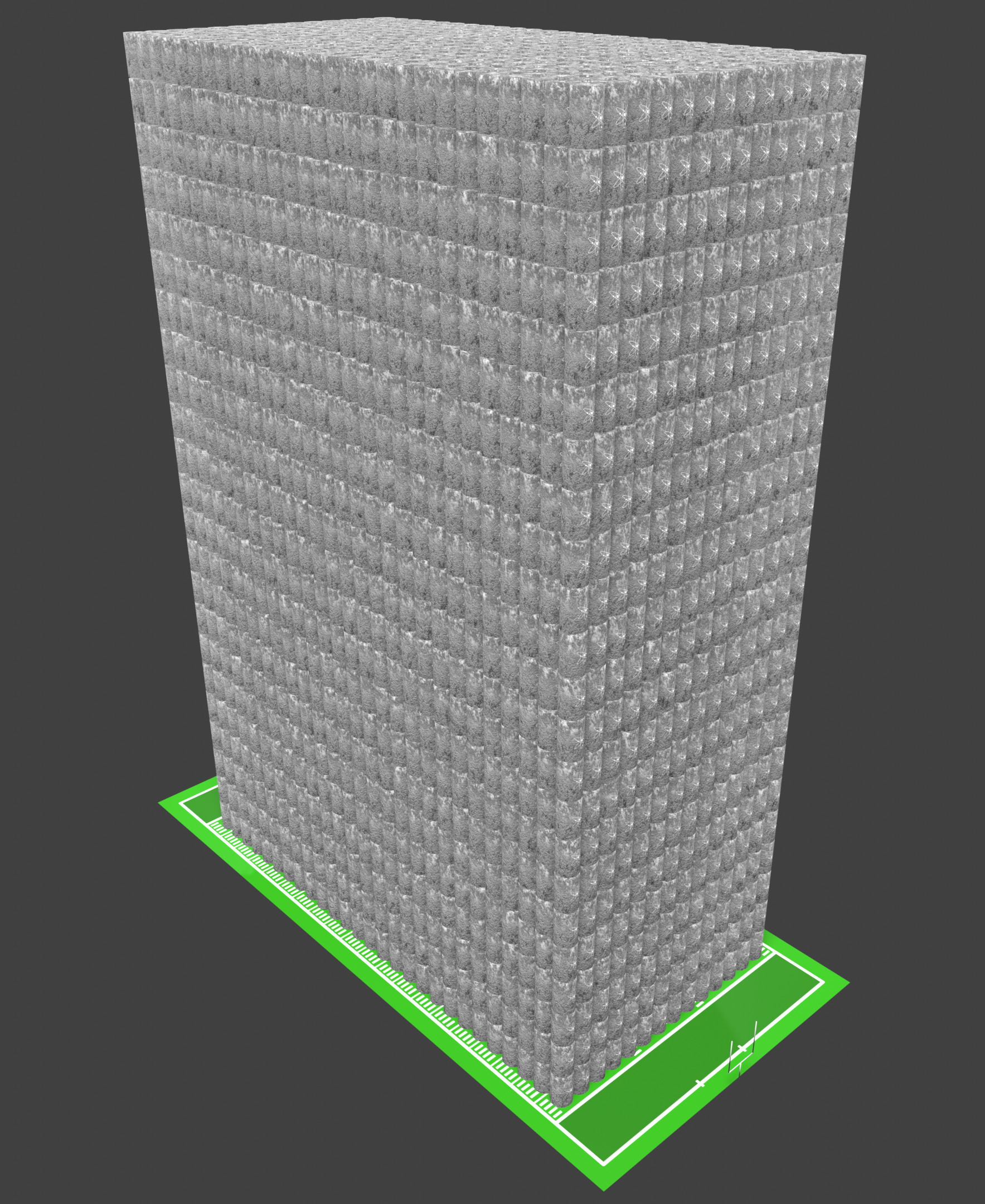
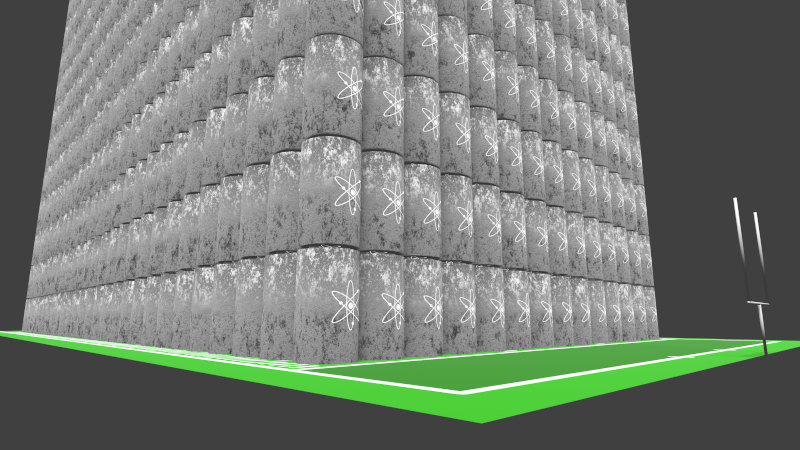
A depiction of all the US nuclear waste as of 2023 stacked up on a football field in dry casks storage containers
In motion:
How much actual used fuel material is in those casks?
Those casks contain not just the high-level waste nuclides, but also fuel assemblies with lots of zirconium, a bunch of steel baskets, and a huge amount of concrete shielding. To get a sense of how much high-level radioactive material is within, we can take a look at the fuel pellets themselves on the football field.
Given the facts below, we can estimate that there are 93,220 tonnes of initial uranium discharged. The oxygen in UO₂ weighs something, so this comes out to 105.7e3 MT of UO2. This is about 9.35 billion fuel pellets. You can fit 9600 fuel pellets between goal lines of a football field, and 5123 pellets between the sidelines. To fit all 9.35 billion pellets, you’d have to stack them 191 levels high, which checks in as a stack of spent fuel pellets 3.0 meters tall (3.3 yards/9.84 feet/118 inches).
This would look roughly like this:
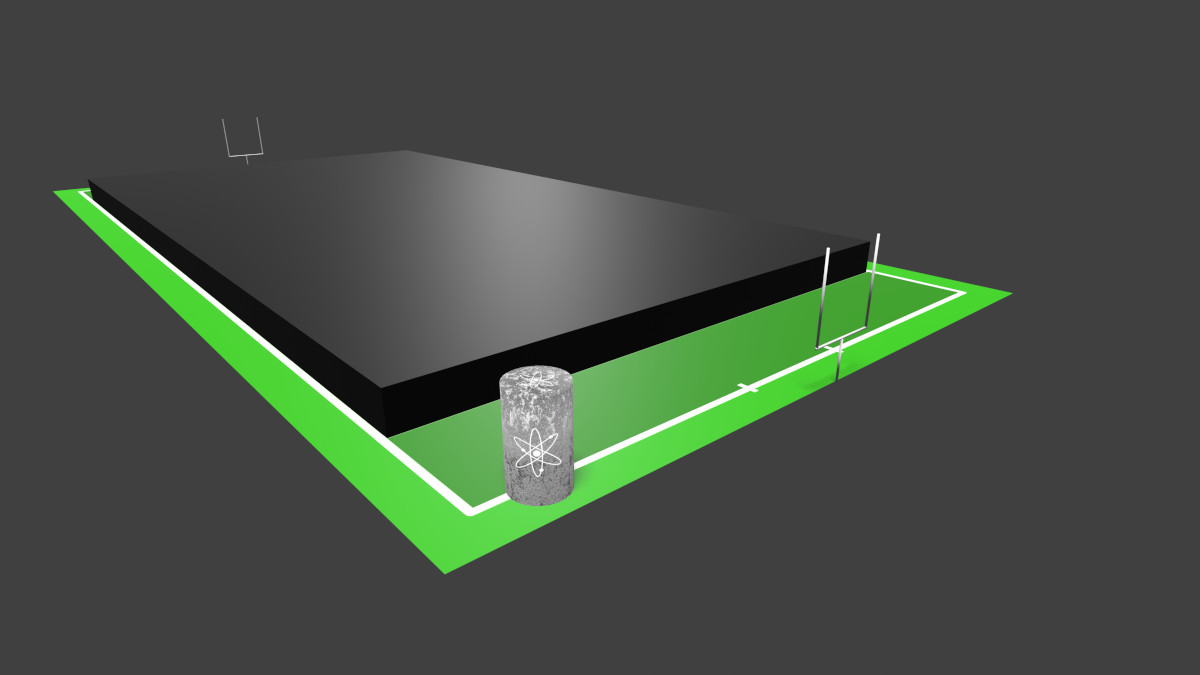
A depiction of all the US nuclear waste as of 2023 stacked up on a football field in spent fuel pellets.
How much actual waste material is there?
As you may know, used nuclear fuel is recyclable and can be used in breeder reactors. Only the fuel atoms that have actually fissioned into fission products are truly spent. Typical US reactors do not recycle their used fuel (French ones do recycle theirs at least once). If we melt the used fuel pellets and recycle them, only the fission products are left over.
Typical reactors get about 50 MWd/kg out of their fuel on average, which represents roughly 5% of the total nuclear energy in each pellet. The rest is regular U-238, which is usable as fuel in breeder reactors. The stack of fission products on a football field, then would be just 15 cm high (5.9 inches).
This would look roughly like this:
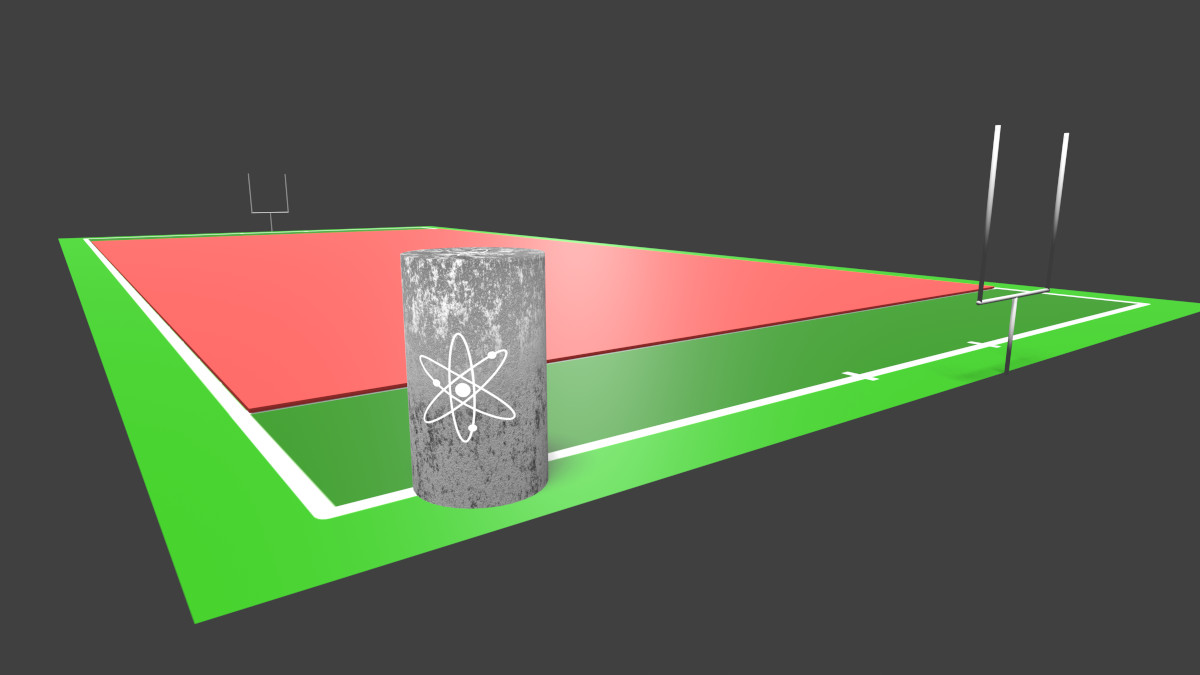
A depiction of all the actual fission products (true waste) in US used nuclear fuel as of 2023 stacked up on a football field.
Basic facts
The following facts were used to derive the conclusions on this page.
- An American football field is 100 yards (91.44m )by 53.3 yards (48.8 m) between the goalposts. The goal posts are 30 feet high and 18.5 feet wide.
- The EIA says that, as of Dec 2017, there are
- 157,681 BWR discharged assemblies + 18,000/3.5 per year
- 119,198 PWR assemblies + 14,313/3.5 per year
- 80,000 MTU spent fuel + 9524/3.5 per year
- A typical PWR assembly has a 17x17 array of fuel pins
- A typical BWR assembly has a 10x10 array of fuel pins
For a typical spent fuel dry cask, we found good information on the Holtec HI-STORM 100.
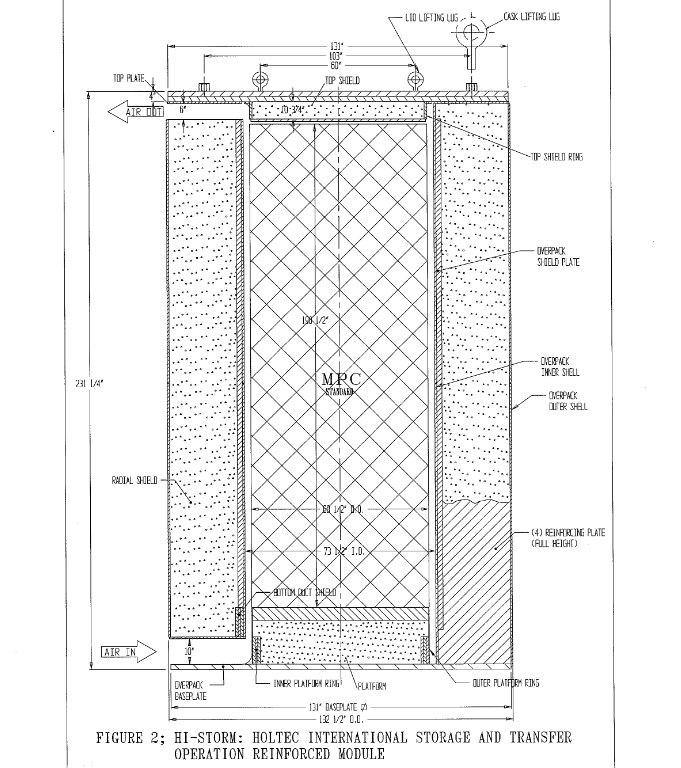
A Holtec HI-STORM 100 used nuclear fuel dry cask from Holtec’s paper: An Overview of HI-STORM: HI-STAR’s Metcon Conjugate
Info about the cask system, including all shielding:
- It can hold:
- 24 standard PWR assemblies, or
- 68 standard BWR assemblies
- Its outer diameter is 131 inches (3.3m)
-
Its height is 231 inches (5.86 m)
- Thus, we can estimate that in 2023, there are enough fuel assemblies to fill:
- 5819 dry casks with PWR assemblies
- 2697 dry casks with BWR assemblies
- Total casks: 8516
As for the nuclear fuel pellets themselves:
- Uranium oxide mass density is about 10 grams/cm³
- A single pellet
is 3/8” OD and 5/8” high, (9.525e-3 m OD, 1.587e-2m high)
- Thus, the volume of a single pellet is 1.131e-6 m³
- The UO2 mass in a single pellet is about 11.3 grams
- The uranium elemental mass in a single fresh pellet is about 10.0 grams
- Typical PWRs and BWRs fission about 5-6% of their uranium atoms before being discharged in the USA.
This page is a part of our Factlet collection.